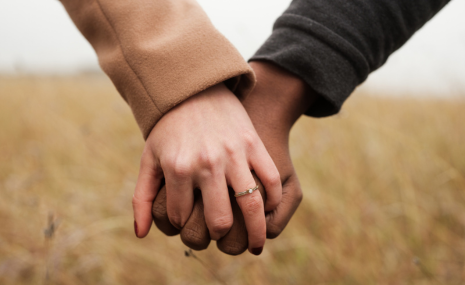Skin Color in the Form of Art
 Much as skin a color can be a touchy topic, Brazilian artist Angélica Dass put an artistic spin to it. Check out how incredibly she displays human colors.
Much as skin a color can be a touchy topic, Brazilian artist Angélica Dass put an artistic spin to it. Check out how incredibly she displays human colors.
The Story Behind Dass’ Skin Tone Art
Find your soulmate on AfroRomance










Angelica Dass has successfully created the color wheel of humanity! Her skin tone palette was inspired by her own brown Brazilian skin and the pink tones of her Spanish husband.
Looking deeper at her immediate family, she discovered a plethora of skin colors that reflect their European and African ancestry. Incredibly, she has been able to pair 4000 different skin tones to Pantone cards. Now her skin tone art is taking the art world by storm.
United Colors of the World
To show that love is all colors, Dass started off by photographing herself, her husband, and then members of her family. The result was a skin tone palette with a range of skin colors. She needed to catalog these race colors using an expert on color standards. This is why she turned to Pantone color cards.
The project became known as "Humanae". It has spread to 18 countries in the world with 4000 portraits already captured for her skin tone art. Dass has successfully gained recognition for her skin tone color palette.
Color and the World
Dass recognizes that skin tone and skin color issues can cause heated debates and uncomfortable silences. She believes that color determines how many people are treated today. One of the facts about race and skin color is that darker people are subjected to oppression in some parts of the world. In the 21st Century, lots of people are still being treated with little to no respect, just because of their skin color.
Seeing Color
Dass’ first brush with color happened when she was barely young enough to understand the nuances of skin color issues. She was six years old, and her teacher wanted her to use a specific skin tone color, which, sadly enough, was pink. Little Dass didn’t see the color of her skin in the pink crayon. And the next day she woke up wishing she were different – white. In fact, she even prayed about it. It is really not surprising how she grew up and took on her famous skin tone art project.
Dass’ experience as a six-year-old is common among children who generally don’t start out thinking of themselves as black and white. Children are imaginative enough to capture skin color through the lenses of things they love and enjoy. And that’s why chocolate and peanut are popular skin color descriptions among children. The black and white color binary is a conditioning that takes deep roots as soon as it is taught to children.
Her understanding of skin color expanded as she grew, and it became even more pronounced when she went on to study fashion and design. Art opened her eyes to see that each color had thousands of hues. People aren’t mainly black and white. They are also a myriad of skin colors in between. She set out to show an inclusive skin tone palette which highlighted the non-binary nature of race colors.
The Future of Color
Angélica Dass hopes to transform our future as human beings through her "Humanae" skin tone color palette. Since her skin color project went global, she has witnessed a change for the better in race relations and she has also seen the opposite of acceptance and inclusion in places where she least expected. But such is life. People will always have their opinions. Sadly when it comes to race and color, some people still choose the negative path.
Check out these facts about race and skin color now. Trust me, it’s an interesting read.
2 responses to "Skin Color in the Form of Art"
Leave a reply
You must be logged in to post a comment.


























































































i love this